A given mass of gas expands from the state A to the state B by three paths 1,2 and 3 as shown in the figure. If respectively be the work done by the gas along three paths then:
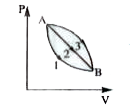 Solution in Telugu
Solution in Telugu
The correct Answer is:B
W = area under graph
Topper's Solved these Questions
- BOOK - AAKASH SERIESCHAPTER - CHEMICAL THERMODYNAMICSEXERCISE - ADDITIONAL PRACTICE EXERCISE (PRACTICS SHEET (ADVANCED) MORE THAN ONE CORRECT ANSWER TYPE QUESTIONS)5videos
CHEMICAL THERMODYNAMICS
- BOOK - AAKASH SERIESCHAPTER - CHEMICAL THERMODYNAMICSEXERCISE - ADDITIONAL PRACTICE EXERCISE (PRACTICS SHEET (ADVANCED) LINKED COMPREHENSION TYPE QUESTIONS)5videos
CHEMICAL THERMODYNAMICS
- BOOK - AAKASH SERIESCHAPTER - CHEMICAL THERMODYNAMICSEXERCISE - ADDITIONAL PRACTICE EXERCISE (LEVEL - II LECTURE SHEET (ADVANCED) INTEGER TYPE QUESTIONS)4videos
CHEMICAL THERMODYNAMICS
- BOOK - AAKASH SERIESCHAPTER - CHEMICAL THERMODYANMICS EXERCISE - Questions For Descriptive Answers28videos
CHEMICAL THERMODYANMICS
- BOOK - AAKASH SERIESCHAPTER - ELECTRON MIGRATION EFFECTS EXERCISE - QUESTIONS FOR DESCRIPTIVE ANSWERS10videos
ELECTRON MIGRATION EFFECTS
Similar Questions
A piston cylinder device initially contains 0.2m3 neon (assume ideal ) at 200kPa inside at T1∘C. A valve is now opened and neon is allowed to escape until the volume reduces to half the initial volume. At the same time heat transfer with outside at T2∘C ensures a constant temperature inside. Select correct statement(s) for given process
 04:39View Solution
04:39View SolutionLiquid water freezes at 273K under external pressure of 1 atm. The process is at equilibrium H2O(l)⇔H2O(s) at 273 K & 1 atm. However it was required to calculate the thermodynamic parameters of the fusion process occuring at same pressure & different temperature.Using the following data, answer the question that follow. dice=0.9 gm/cc, dH2O(l) = 1 gm//c, CP[H2O(s))]=36.4JK−1mol−1
CP[H2O(l)]=75.3JK−1mol−1,ΔHfusion=6008.2Jmol−1
The value of ''ΔHfusion'' at 263K & 1 atm will be01:34View SolutionHow many of the following processes have +ve sign for entropy change?
(i) Cl2(g)⇔2Cl(g)
(ii) S8(rhombic)⇔4S2(g)
(iii) 3O2(g)⇔2O3(g)
(iv) 60C (graphite ) ⇔C60(s)
(v) Ag+(aq)+Br−(aq)⇔AgBr(s)+H2O
(vi) H2O(l)⇔H2O(s)
(vii) 2NH3(g)⇔N2(g)+3H2(g)
(viii) CuSO4(g)+5H2O(l)⇔CuSO4.5H2O(s)
(ix) Ba(OH)2.10H2O(s)+2NH40Cl(s)⇔BaCl2(s)+2NH3(g)+12H2O(l)View SolutionHow does heat of neutralisation value change with the chemical nature of acid and base?
01:39View SolutionHyperconjugation effect is also termed as 'no bond resonance'. Why?
04:51View SolutionA given mass of gas expands from state A to state b by three paths 1,2 , and 3 as shown in the figure below. If w_(1) , w_(2) and w_(3) , respectively, be the work done by the gas along three paths, then
04:57View SolutionA given mass of a gas expands from the state A to the state B by three paths 1,2 and 3 as shown in the figure, If W1,W2 and W3 respectively be the work done by the gas along the three paths then
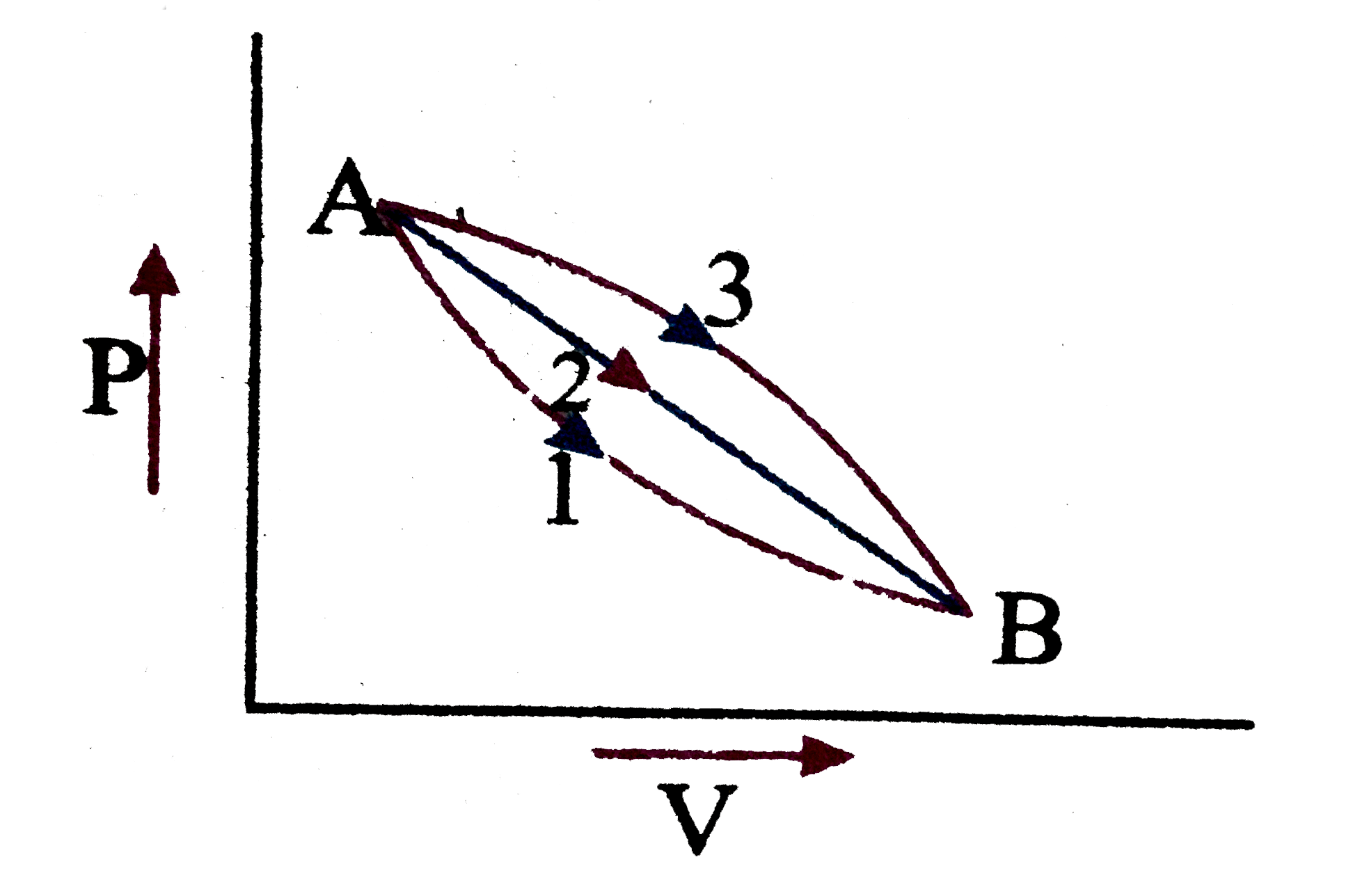 02:06View Solution
02:06View SolutionA given mass of a gas expands ffrom a state A to the state B by three paths 1,2 and 3 as shown in T-V indicator diagram. If W_(1), W_(2) and W_(3) respectively be the work done by the gas along the three paths, then
03:01View SolutionA given mass of gas expends from the state A to the state B by three paths 1,2 and 3 as shown in the figure. If w_(1),w_(2) and w_(3) respectively be the magnitude of worl done by the gas along three paths then :
02:06View SolutionA givne mass of a gas expands from a state A to the state B by three paths 1, 2 and 3 as shown in T-V indicator diagram. If W1,W2 and W3 respectively be the work done by the gas along the three paths, then
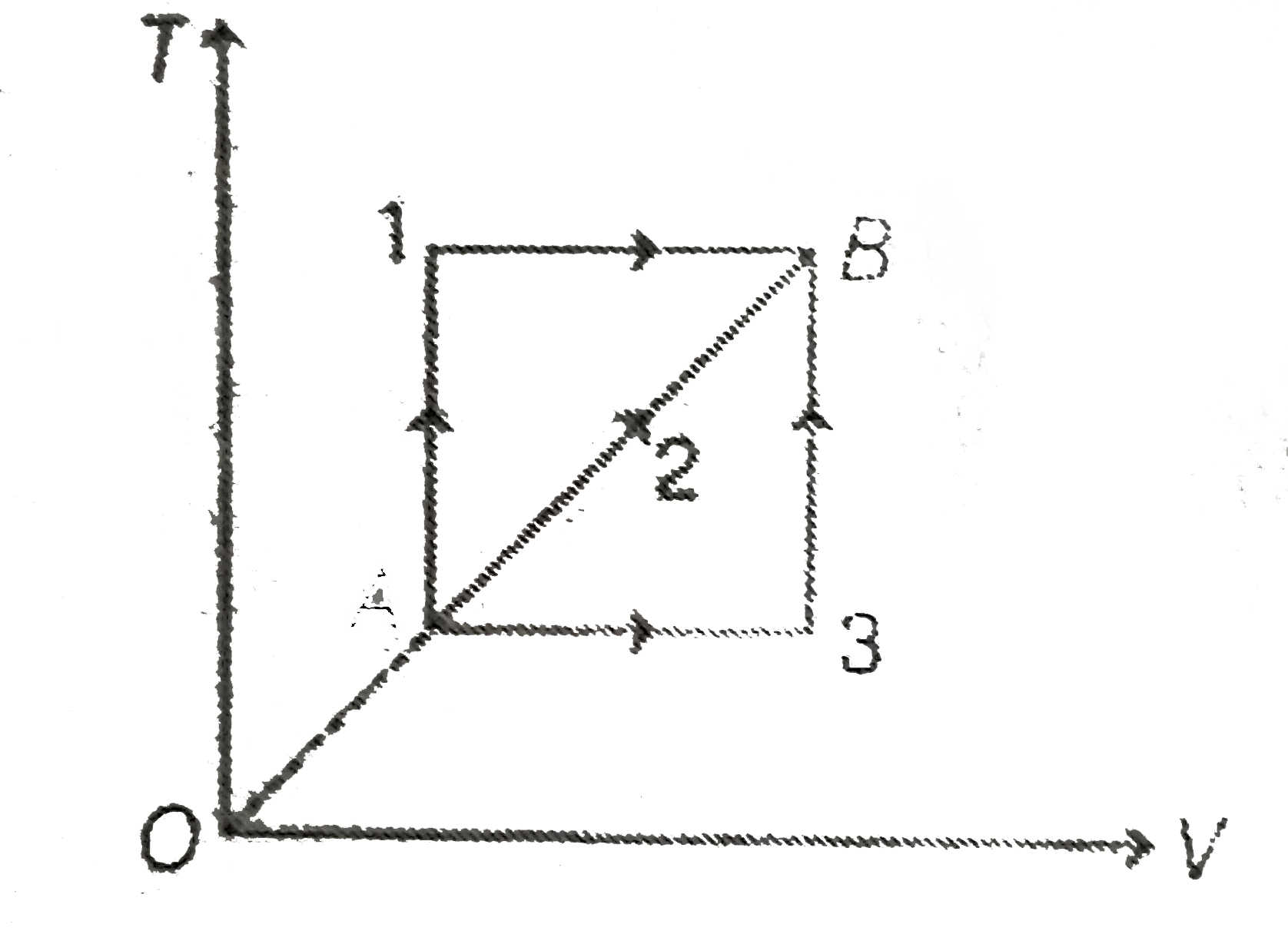 02:20View Solution
02:20View SolutionA gas of given mass, is brought from stage A to B along three paths 1, 2 and 3, as shown in the figure. If the amount of work done in these three processes is respectively equal to W1,W2 and W3, then–
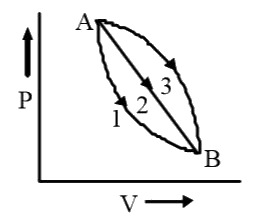 04:22View Solution
04:22View SolutionA given mass of gas expands from state A to state B by three paths 1, 2 and 3 as shown in the figure If w_(1), w_(2) and w_(3) respectively are be the works done by the gas along three paths, then
02:52View SolutionIf W1,W2andW3 represent the work done in moving a particle from A to B along three different paths 1, 2 and 3 respectively (as shown) in a gravitational field of point mass m, then
02:58View SolutionA given mass of gas expands from state A to state B by three paths 1, 2 and 3 as shown in the figure
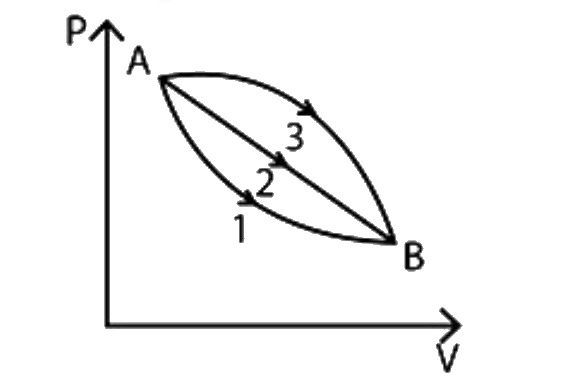
If w1,w2andw3 respectively are be the works done by the gas along three paths, then06:07View SolutionA given mass of gas expands from the state A to the state B by three paths 1,2 and 3 as shown in the figure. If w1,w2andw3 respectively be the work done by the gas along three paths then:
 04:56View Solution
04:56View SolutionA given mass of gas expands from state A to state B by three paths 1,2, and 3 as shown in the figure below. If w1,w2 and w3, respectively, be the work done by the gas along three paths, then
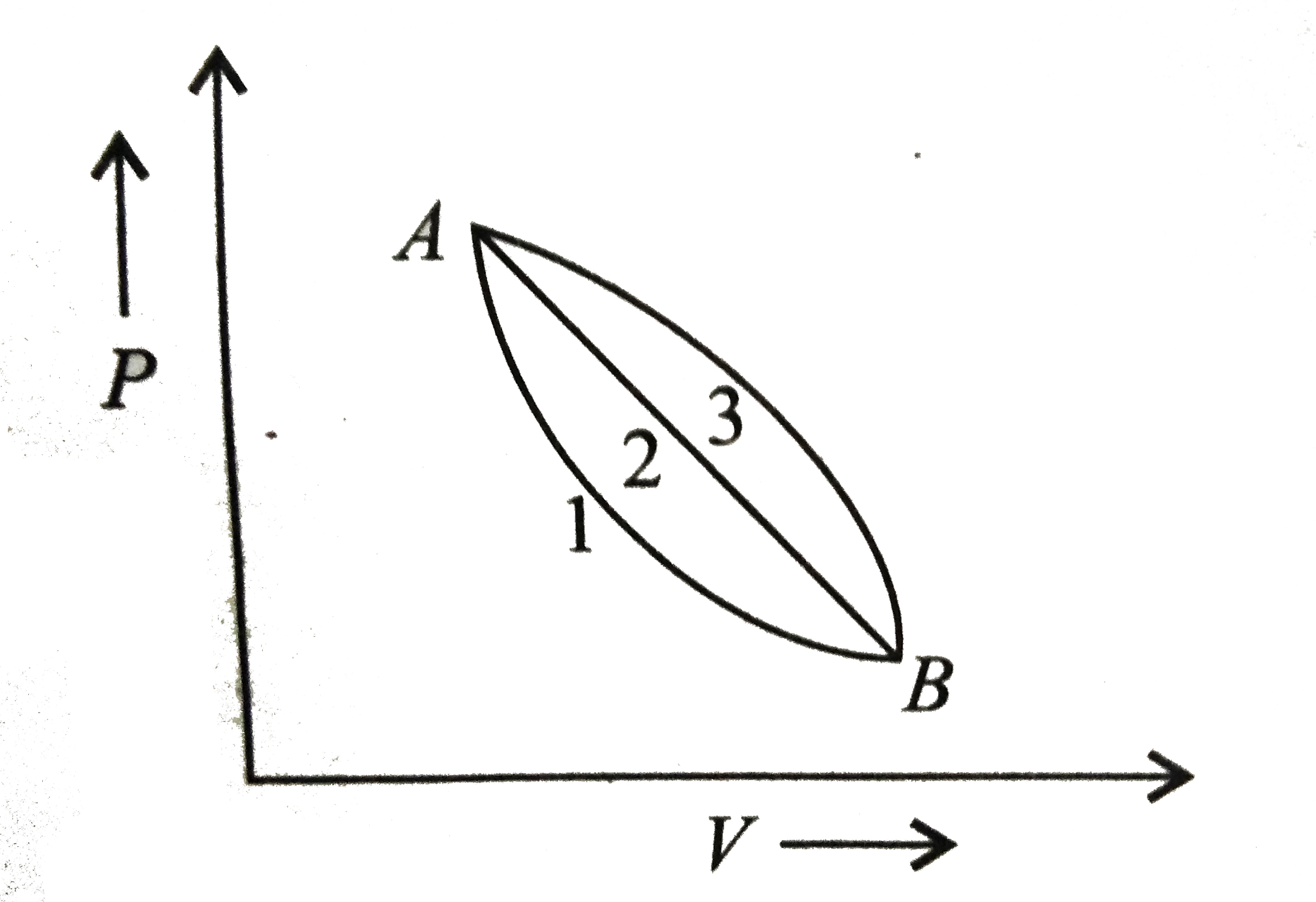 01:45View Solution
01:45View Solution

